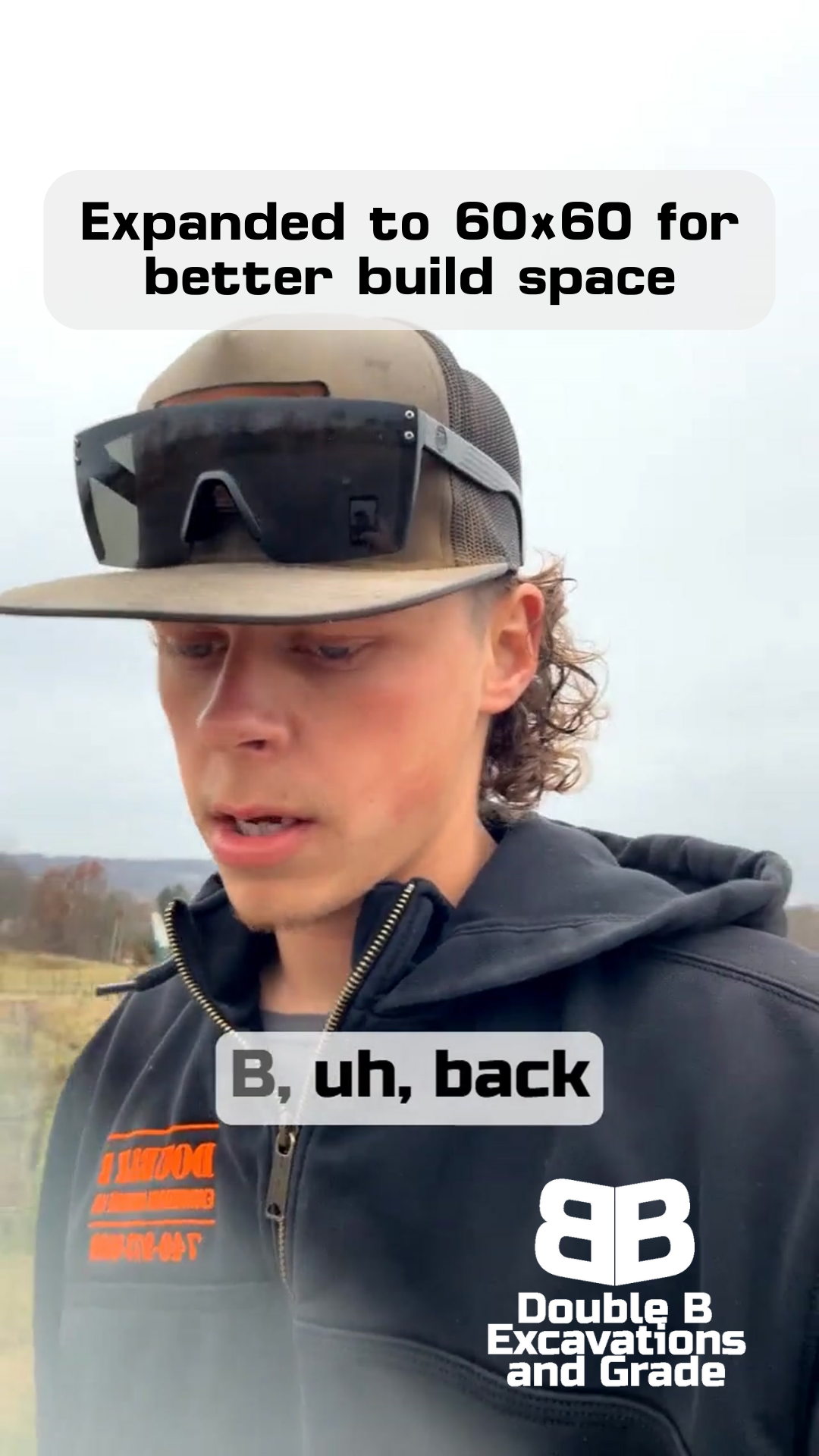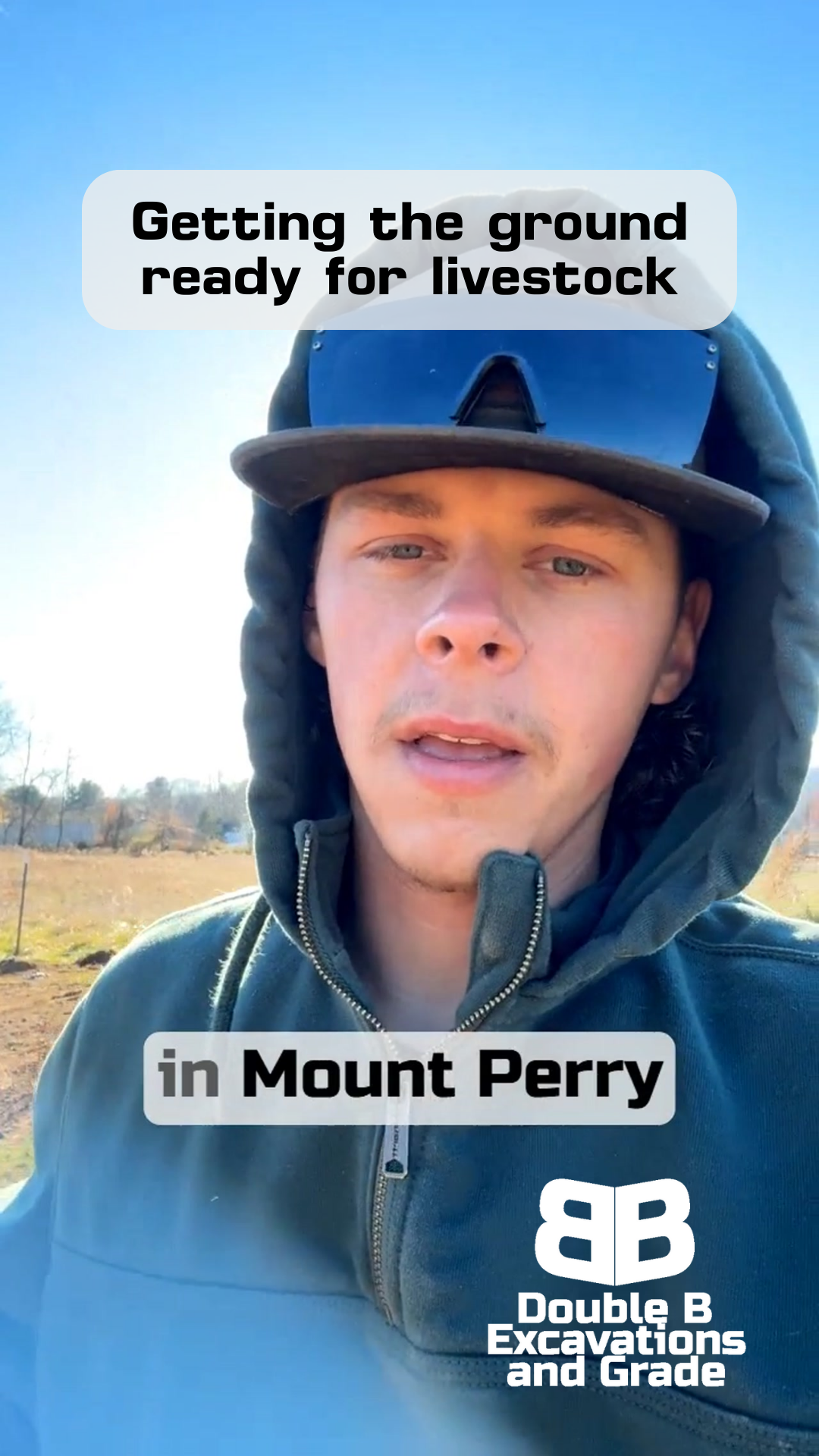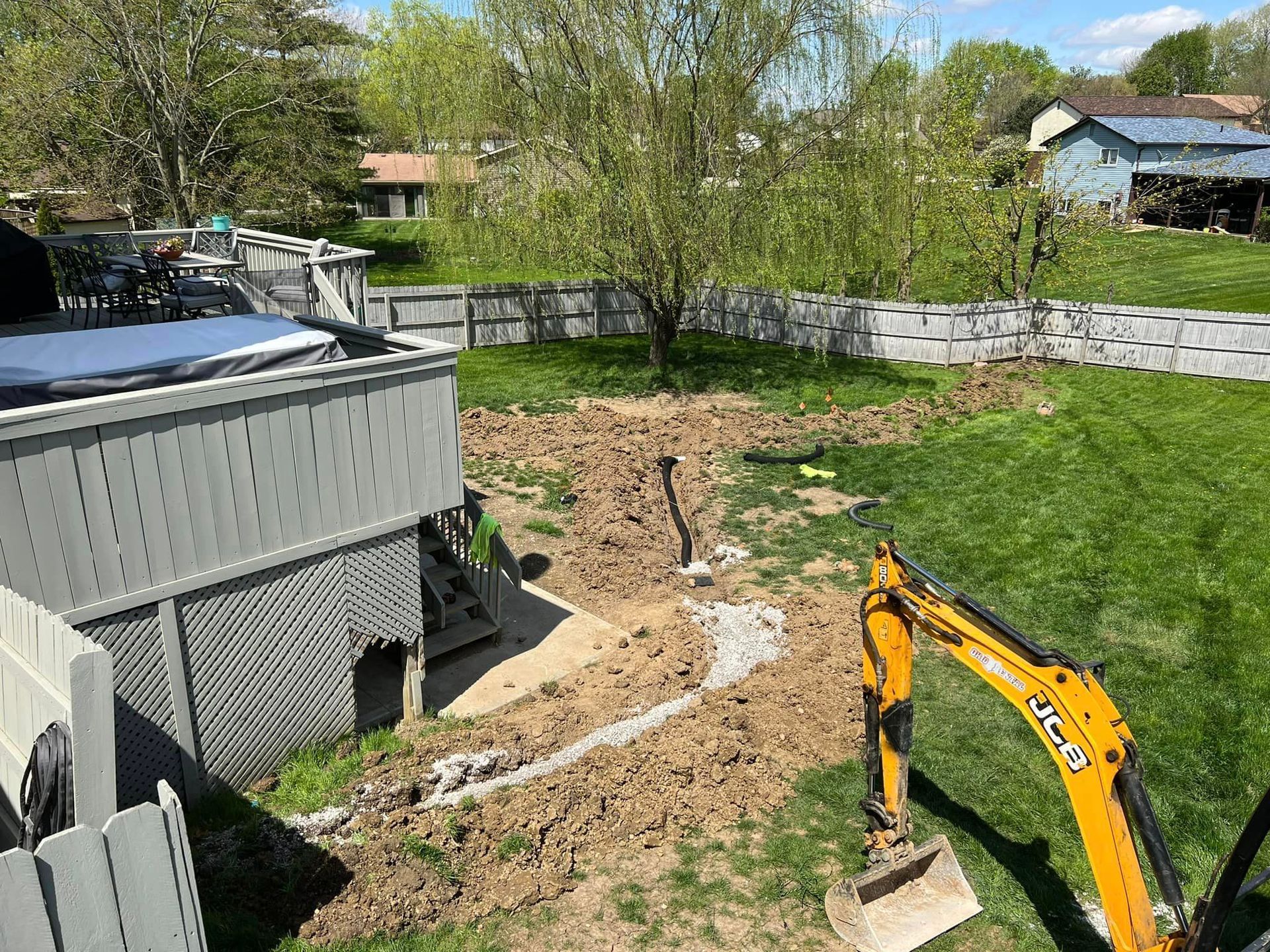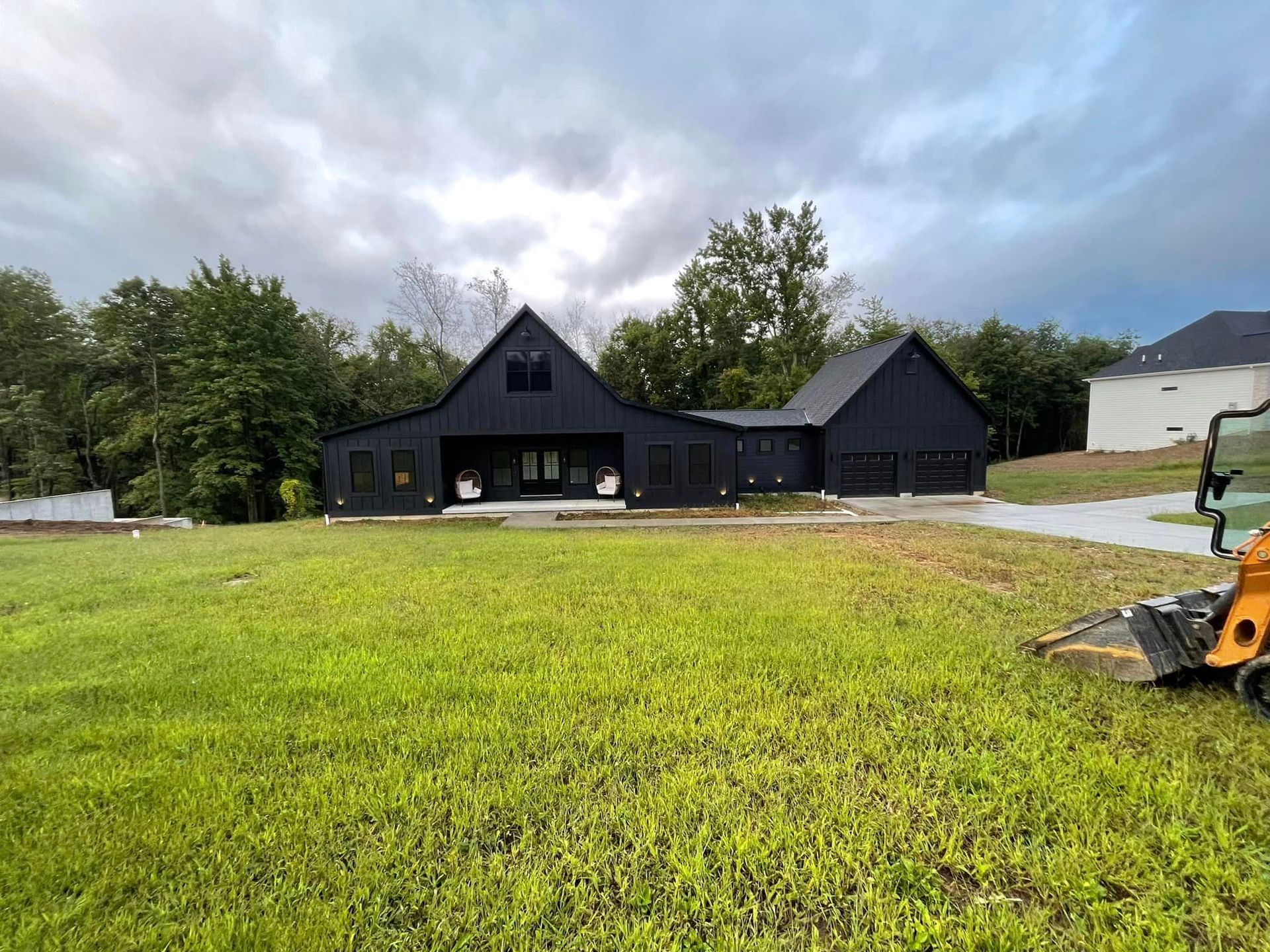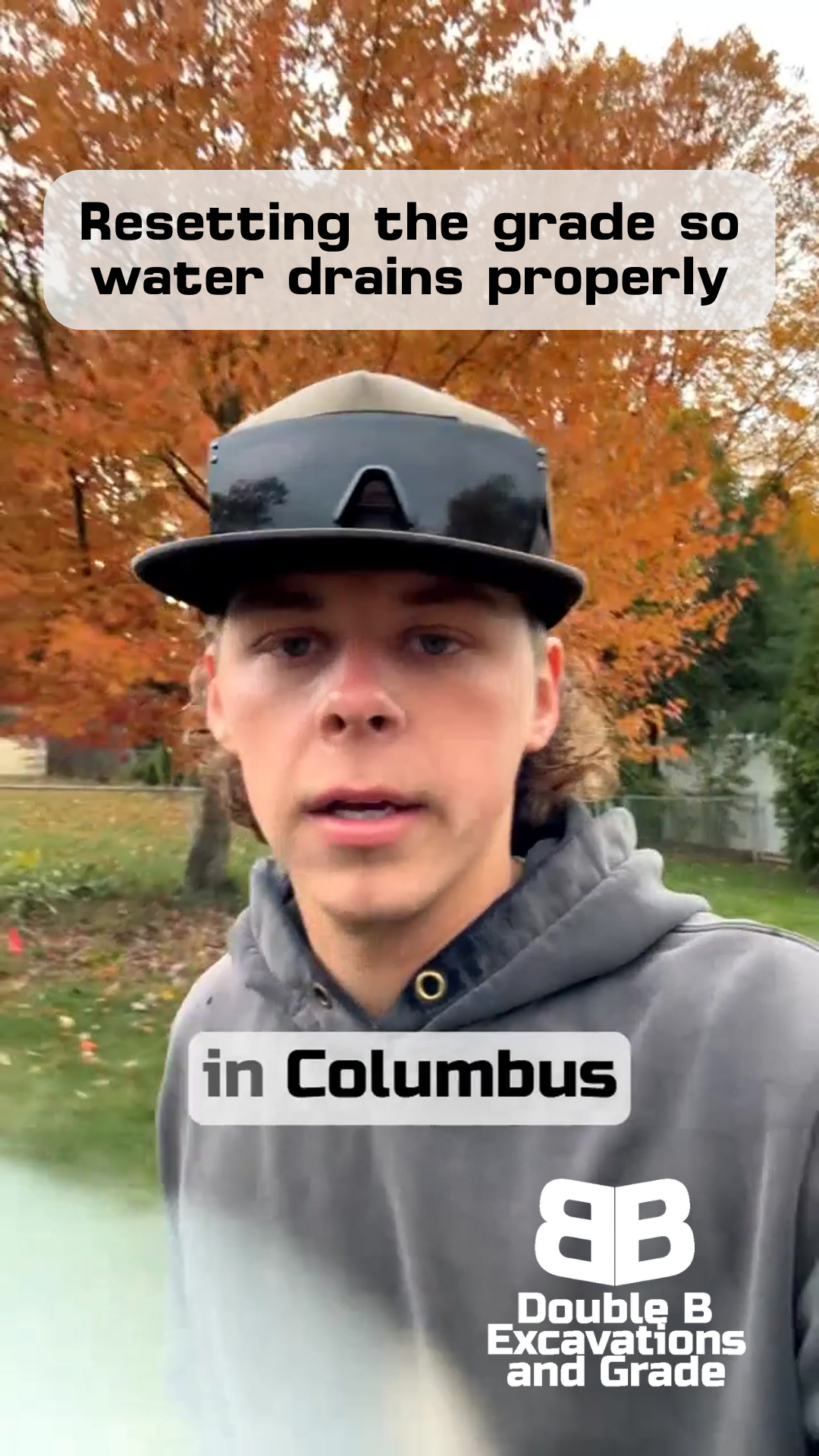Fixing Failed Culverts: How Proper Installation Saves Your Driveway
Double B Excavations & Grade LLC
Drainage Done Wrong
From Recurring Repairs to Permanent Fix
When we pulled up to this Pickerington driveway, we saw something all too familiar - a homeowner stuck in an expensive cycle of repairs.
They'd been rebuilding the same section of driveway over and over, watching their asphalt slowly wash away each time.
It's the kind of problem that makes you shake your head, because it never should have happened in the first place.
Here's the thing about culvert problems: they don't get better on their own.
Every rainfall that passes through an improperly installed culvert is slowly but surely eating away at your driveway.
And while it might be tempting to just patch things up and hope for the best, that's like putting a band-aid on a leaky pipe - it might look better for a while, but the real problem is still there, getting worse by the day.
Welcome to Double B!
Understanding Culvert Failure
Let's break down what we found in Pickerington. The first thing we noticed was how the asphalt was eroding away around the culvert area. This isn't just normal wear and tear - it's a clear sign that water isn't flowing where it should be. Instead of passing smoothly through the culvert, it's finding ways to seep around and under it.
The main culprit? Poor compaction where two culverts meet. When these pipes aren't installed properly, they create small gaps or voids. Water is pretty simple - it always finds the easiest path to flow. In this case, instead of flowing through the culvert like it should, it's working its way through these gaps, slowly washing away the supporting material underneath the driveway.
Think about it like this: every time it rains, water is quietly working away at these weak spots. At first, you might not notice anything. But over time, the ground starts settling, the asphalt starts cracking, and before you know it, you're looking at another expensive repair. That's exactly what happened to our Pickerington customer - they kept fixing the surface problem without addressing what was happening underneath.
The Right Way to Install Culverts
Let me walk you through how we're fixing this Pickerington driveway the right way. First off, we're not messing around with small pipes - we're going with a 48-inch culvert. Why so big? Because when it comes to water control, it's always better to have too much capacity than not enough.
But the size of the pipe is just the start. We're bringing in plenty of #2 stone and rip rap, and there's a reason for each. The #2 stone creates a solid foundation that won't wash away, while the rip rap we're putting on the sides acts like armor against erosion. These materials might not look as pretty as fresh asphalt, but they're doing the heavy lifting when it comes to protecting your investment.
The Installation Process
When we tackle a job like this, we start by tearing everything out. There's no point in trying to save parts of a failed system - you've got to get down to solid ground. In Pickerington, that meant cutting out sections of asphalt and removing the old culverts completely.
Here's what a proper installation looks like:
- First, we make clean cuts in the asphalt to create clear working areas
- Then we remove the old culverts and any compromised material
- Next comes proper grading to ensure water flows the right way
- We install the new 48-inch culvert with careful attention to compaction
- The #2 stone goes in around the culvert, compacted in layers
- Finally, we protect the sides with rip rap to prevent future erosion
Sure, we could make it look prettier by just paving over the old problem. But our customer already has an asphalt contractor lined up to handle that part. Our job is making sure they never have to deal with washing out or erosion again. Because at the end of the day, what's under your driveway matters more than what's on top of it.
Long-Term Benefits
Let's talk about why doing it right matters. Sure, our solution in Pickerington might cost more upfront than a quick fix, but think about the math. When you're rebuilding your driveway every few years, those "cheaper" repairs add up fast. Not to mention the hassle of dealing with washouts, erosion, and potentially bigger problems down the line.
A properly installed culvert system means:
- No more repeated repairs
- Better protection for your whole driveway
- Proper water control even during heavy rains
- Peace of mind during storm season
- Higher property value (because proper drainage matters)
The best part? Once it's done right, you can pretty much forget about it. That's the kind of value you can't put a price tag on.
Next Steps
If you're looking at your own driveway and wondering if you might have similar issues, here are some signs to watch for:
- Asphalt cracking or sinking around your culvert
- Water pooling where it shouldn't
- Erosion on the sides of your driveway
- Having to repair the same spot repeatedly
Don't wait until you're stuck in the expensive cycle of repeated repairs like our Pickerington customer was. If you notice any of these signs, it's worth getting a professional assessment. Sometimes catching these problems early can save you thousands in repairs down the road.
Looking Forward
Here in central Ohio, we deal with all kinds of weather. Your driveway needs to handle everything from spring rains to winter freezes. Whether you're in Pickerington or anywhere else in the area, proper culvert installation isn't just about fixing a current problem - it's about preventing future ones.
Need someone to take a look at your culvert situation? We're always happy to come out and give you an honest assessment. Because at the end of the day, we'd rather help you fix it right the first time than see you stuck in that cycle of endless repairs.
